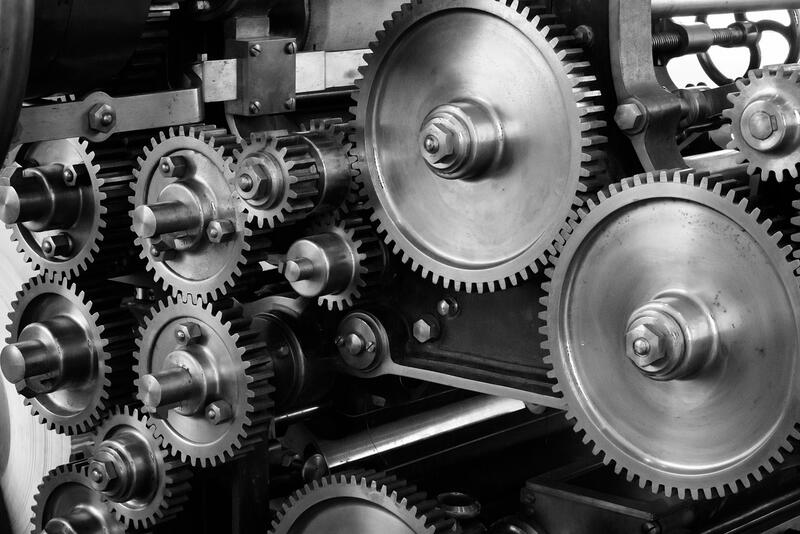Advancing Towards Decarbonization in Machining
This article explores the growing trend towards decarbonization in the machining industry and the strategies being implemented to reduce carbon emissions.

Introduction
Decarbonisation is the process of reducing carbon emissions to mitigate climate change and achieve net-zero carbon emissions. The machining sector, which includes metalworking, cutting, drilling, milling, and grinding, is a significant contributor to carbon emissions due to its energy-intensive and material-intensive operations. Decarbonisation in the machining sector is crucial for achieving global climate goals and reducing the sector's environmental impact. This article explores the importance of decarbonisation in the machining sector, the main sources of carbon emissions, ways to reduce carbon emissions, challenges facing decarbonisation, and the implications of decarbonisation for the machining sector.
Importance of Decarbonisation in the Machining Sector
The machining sector is responsible for a significant amount of carbon emissions due to its reliance on fossil fuels and energy-intensive processes. According to the International Energy Agency (IEA), the manufacturing sector, which includes the machining sector, accounts for approximately 30% of global carbon emissions. Therefore, decarbonisation in the machining sector is crucial for achieving global climate goals and reducing the sector's environmental impact.
Furthermore, decarbonisation in the machining sector can lead to several benefits, such as reducing energy costs, improving energy efficiency, enhancing competitiveness, and promoting sustainable practices. For instance, reducing energy consumption and carbon emissions can lower operating costs and improve the bottom line. Additionally, adopting sustainable practices can attract environmentally conscious customers and investors, enhancing the company's reputation and market position.
Main Sources of Carbon Emissions in the Machining Sector
The machining sector's main sources of carbon emissions include energy consumption, material waste, and transportation. Energy consumption is the most significant contributor to carbon emissions in the machining sector, accounting for approximately 80% of total emissions. The energy consumption is mainly from electricity and fossil fuels, such as natural gas and oil, used to power machines, lighting, heating, and cooling systems.
Material waste is another significant source of carbon emissions in the machining sector. The production of raw materials, such as metals and plastics, requires significant amounts of energy and emits carbon dioxide. Additionally, the machining process generates waste materials, such as chips and scraps, which are often discarded and contribute to carbon emissions.
Transportation is another source of carbon emissions in the machining sector, mainly from the transportation of raw materials, finished products, and personnel. The transportation of raw materials and finished products requires fossil fuels, such as diesel and gasoline, which emit carbon dioxide. Additionally, the transportation of personnel to and from the workplace also contributes to carbon emissions.
Ways to Reduce Carbon Emissions in the Machining Sector
Reducing carbon emissions in the machining sector requires a combination of energy efficiency measures, renewable energy adoption, material waste reduction, and sustainable transportation practices. Some of the ways to reduce carbon emissions in the machining sector include:
- Energy Efficiency Measures: Implementing energy efficiency measures, such as upgrading equipment, improving insulation, and optimizing processes, can reduce energy consumption and carbon emissions.
- Renewable Energy Adoption: Adopting renewable energy sources, such as solar, wind, and geothermal, can reduce reliance on fossil fuels and lower carbon emissions.
- Material Waste Reduction: Reducing material waste through recycling, reusing, and repurposing can reduce carbon emissions from the production of raw materials and the disposal of waste materials.
- Sustainable Transportation Practices: Adopting sustainable transportation practices, such as using electric vehicles, carpooling, and public transportation, can reduce carbon emissions from transportation.
Challenges Facing Decarbonisation in the Machining Sector
Decarbonisation in the machining sector faces several challenges, such as high costs, technological barriers, and lack of incentives. The high costs of implementing energy efficiency measures, adopting renewable energy sources, and reducing material waste can be a significant barrier for small and medium-sized enterprises (SMEs) with limited resources. Additionally, the technological barriers, such as the lack of suitable renewable energy technologies and energy-efficient equipment, can hinder the adoption of sustainable practices.
Furthermore, the lack of incentives, such as government subsidies, tax breaks, and carbon pricing, can discourage companies from investing in decarbonisation. Without incentives, companies may prioritize short-term profits over long-term sustainability, hindering decarbonisation efforts.
Implications of Decarbonisation for the Machining Sector
Decarbonisation in the machining sector can have several implications, such as reduced energy costs, improved competitiveness, and enhanced sustainability. Adopting sustainable practices, such as energy efficiency measures, renewable energy adoption, and material waste reduction, can reduce energy costs and improve competitiveness. Additionally, decarbonisation can enhance the company's sustainability and reputation, attracting environmentally conscious customers and investors.
Furthermore, decarbonisation can lead to new business opportunities, such as the production of sustainable products and services. For instance, the demand for sustainable products, such as electric vehicles and renewable energy technologies, is growing, creating new market opportunities for companies that adopt sustainable practices.
Conclusion
Decarbonisation in the machining sector is crucial for achieving global climate goals and reducing the sector's environmental impact. The machining sector's main sources of carbon emissions include energy consumption, material waste, and transportation. Reducing carbon emissions in the machining sector requires a combination of energy efficiency measures, renewable energy adoption, material waste reduction, and sustainable transportation practices. However, decarbonisation in the machining sector faces several challenges, such as high costs, technological barriers, and lack of incentives. Nonetheless, decarbonisation in the machining sector can lead to several benefits, such as reduced energy costs, improved competitiveness, and enhanced sustainability.